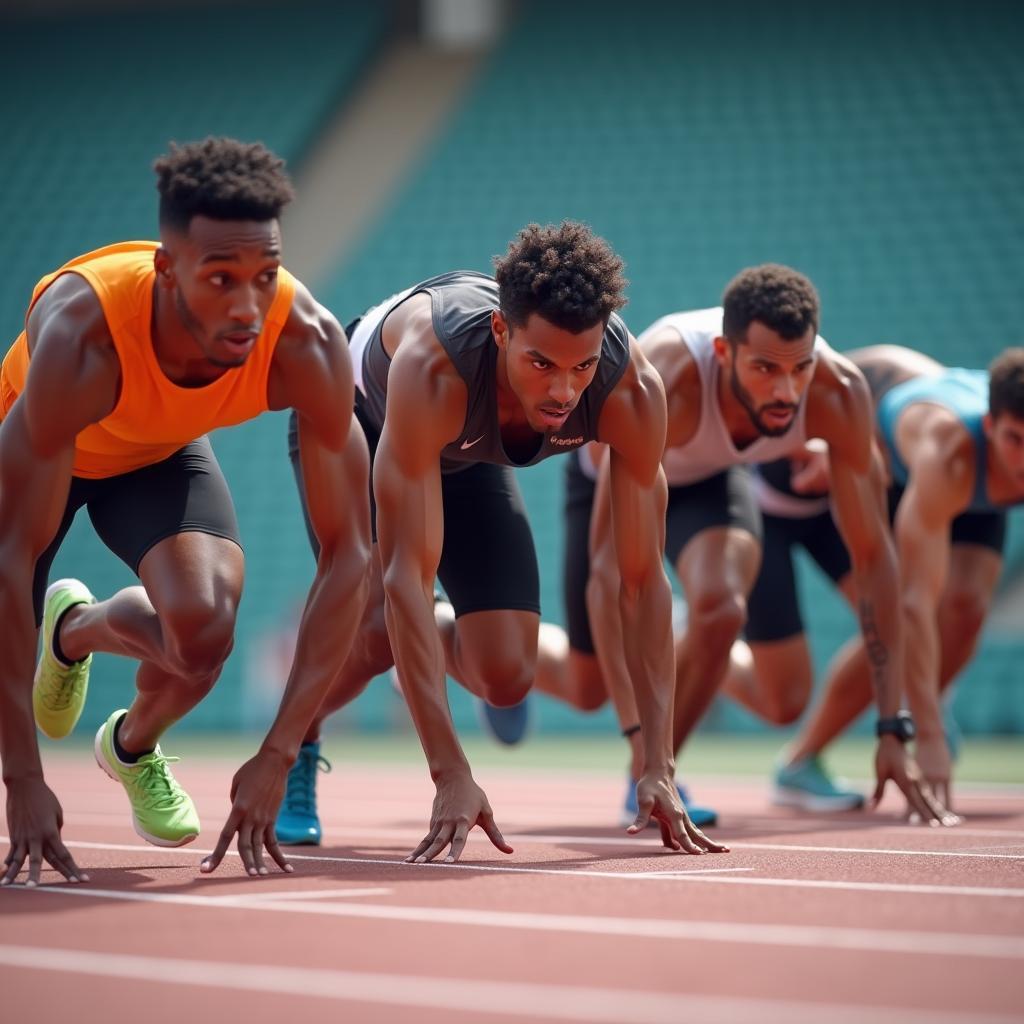Anaerobic endurance (noun, /ˌænəˈrəʊbɪk ɪnˈdjʊərəns/)
Definition: The ability of the body to sustain high-intensity, short-duration activities without the use of oxygen.
As an IELTS candidate, understanding and effectively using specialized vocabulary like ‘anaerobic endurance’ can significantly boost your performance across all sections of the test. Let’s dive deep into this term and explore how you can master it for your IELTS preparation.

Context and Usage of ‘Anaerobic Endurance’
Examples in Context
- Athletes focus on improving their anaerobic endurance to excel in high-intensity sports like sprinting.
This sentence demonstrates the relevance of anaerobic endurance in sports performance. - The HIIT workout was designed to challenge participants’ anaerobic endurance and push their limits.
Here, we see the term used in the context of fitness training methods. - Researchers found that teenagers with higher anaerobic endurance performed better in explosive sports like basketball.
This example shows how the concept is applied in scientific research related to sports performance. - To enhance your anaerobic endurance, incorporate short bursts of intense exercise into your routine.
This sentence provides practical advice for improving anaerobic endurance. - The fitness test included measures of both aerobic and anaerobic endurance to give a comprehensive view of the athletes’ capabilities.
This example contrasts anaerobic endurance with aerobic endurance, highlighting the distinction between the two concepts.
Common Contexts
‘Anaerobic endurance’ is frequently encountered in discussions about:
- Sports physiology
- High-intensity interval training (HIIT)
- Fitness assessment
- Athletic performance optimization
- Exercise science research
Frequency in IELTS
While ‘anaerobic endurance’ is not an extremely common term in IELTS, it may appear in:
- Reading passages about sports science or fitness
- Listening sections discussing athletic training or exercise physiology
- Writing Task 2 essays on topics related to health, fitness, or sports
- Speaking Part 3 questions about exercise trends or athletic performance
Analyzing ‘Anaerobic Endurance’
Word Structure
- Ana- (prefix): without
- -erobic (root): relating to or requiring oxygen
- Endurance (noun): the ability to endure an unpleasant or difficult process or situation without giving way
The term literally means “endurance without oxygen,” reflecting the body’s ability to perform without relying on oxygen for energy production.
Synonyms and Antonyms
Synonyms:
- Lactate threshold endurance
- High-intensity stamina
- Glycolytic capacity
Antonyms:
- Aerobic endurance
- Low-intensity stamina
- Oxidative capacity
Memorization Techniques
Mind Mapping
Create a mind map with ‘anaerobic endurance’ at the center, branching out to related concepts:
- Sports: Sprinting, weightlifting, HIIT
- Physiological processes: Lactic acid production, glycolysis
- Training methods: Interval training, plyometrics
- Benefits: Improved power output, increased metabolic rate
Storytelling Technique
Imagine a sprinter named Ana (anaerobic) who has incredible endurance for short bursts. She excels in 100-meter races but struggles in marathons. This story helps associate the term with its meaning and application.
Practical Application
Exercise 1: Sentence Completion
Complete the following sentences using ‘anaerobic endurance’ or related terms:
- The boxer’s __ allowed him to maintain high power output throughout the match.
- __ training is crucial for sports that require short bursts of intense activity.
- To improve your __, try incorporating sprint intervals into your workout routine.
(Answers: 1. anaerobic endurance, 2. Anaerobic endurance, 3. anaerobic endurance)
Exercise 2: IELTS Writing Task 2 Practice
Topic: Some people believe that high-intensity interval training (HIIT) is more effective than traditional cardio for overall fitness. Do you agree or disagree?
In your response, be sure to use ‘anaerobic endurance’ and related vocabulary accurately. Here’s a sample paragraph to get you started:
“High-intensity interval training (HIIT) has gained popularity due to its ability to improve anaerobic endurance efficiently. Unlike traditional cardio, which primarily enhances aerobic capacity, HIIT challenges the body’s ability to perform without oxygen, leading to increased lactate threshold and improved overall fitness. This makes it particularly beneficial for individuals seeking to enhance their performance in sports requiring short bursts of intense activity.”
Exercise 3: IELTS Speaking Practice
Imagine you’re asked the following question in IELTS Speaking Part 3:
“Do you think schools should focus more on anaerobic or aerobic activities in physical education classes?”
Practice answering this question, incorporating your understanding of anaerobic endurance and contrasting it with aerobic activities. Use specific examples and explain the benefits of each type of exercise.
Conclusion
Mastering specialized terms like ‘anaerobic endurance’ can significantly enhance your IELTS performance, particularly in tasks related to health, fitness, and sports. By understanding its context, analyzing its structure, and practicing its use in various IELTS-style exercises, you’ll be well-prepared to incorporate this vocabulary effectively in your test.
Remember, the key to retaining new vocabulary is consistent practice and application. Try to use ‘anaerobic endurance’ in your conversations or writing about fitness and sports. The more you engage with the term, the more natural it will become in your language use.
We encourage you to share your experiences with learning this term or any questions you may have about its usage in the comments section below. How might you incorporate ‘anaerobic endurance’ into your IELTS preparation strategy?
For more insights on related topics, check out our articles on aerobic endurance and endurance sports.